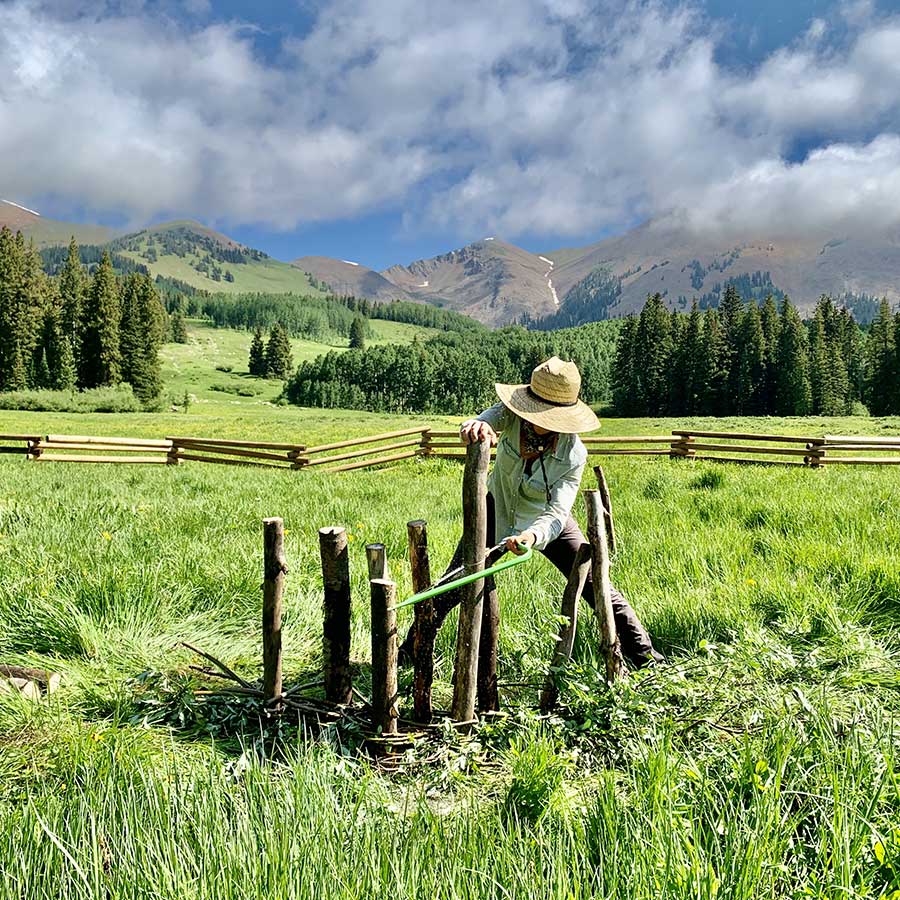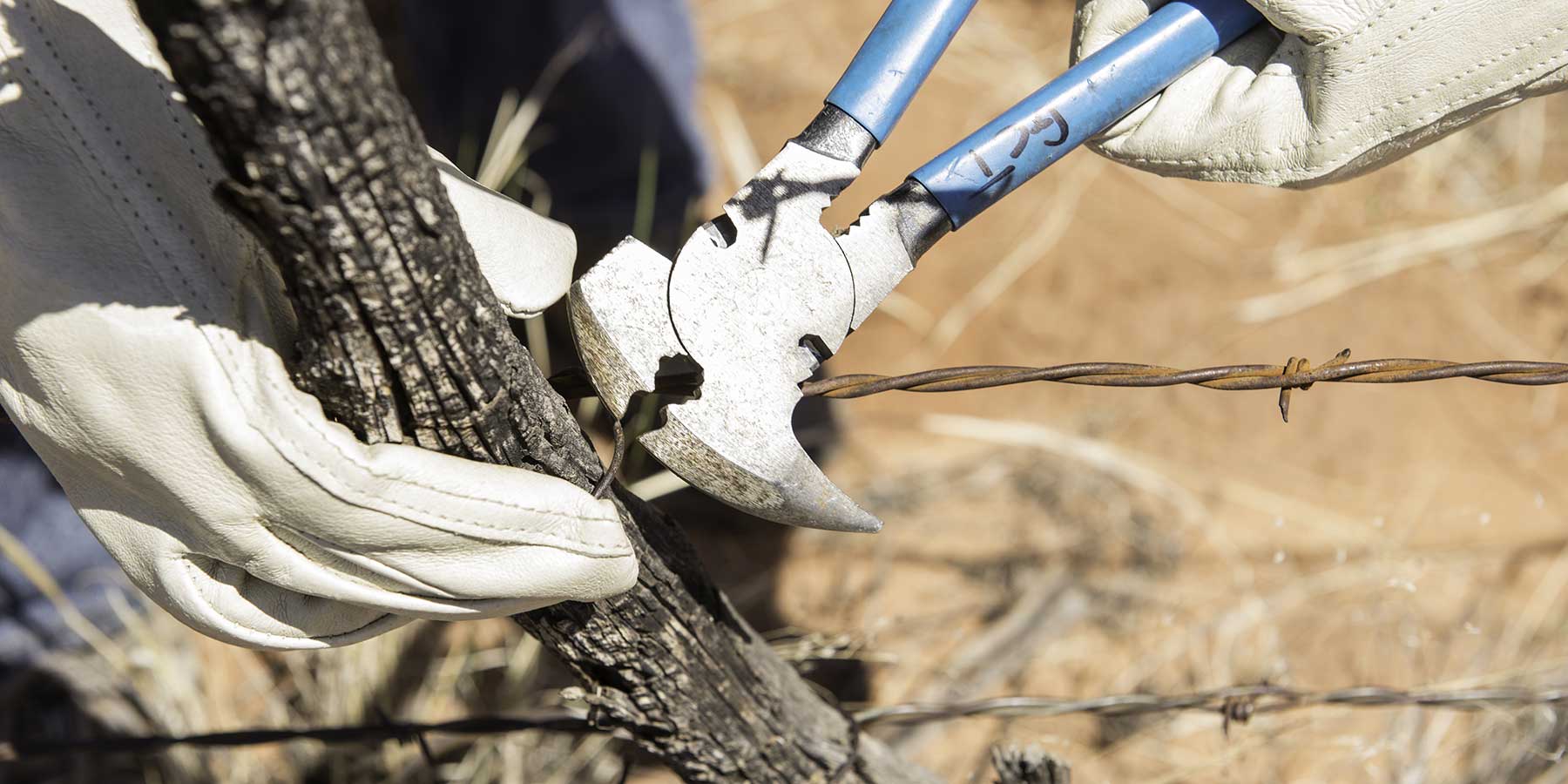
Plants and Animals
Caring for plants and animals that call the Colorado Plateau home
From pikas on alpine ridgelines to frogs in desert canyons, the Colorado Plateau is home to an incredible array of wild creatures.
We work to make sure native species have the habitats, water, and space they need to thrive.
Sometimes we use clipboards and data sheets. Other times we use shovels. And often, we don work gloves. With the help of volunteers and research partners, we improve the health of the land for our plant and animal neighbors across the plateau.

We restore beaver habitat
Beavers, whose dams help slow the flow of water, are master engineers that change the way water flows in our forests.
Their dams raise creek beds, reduce the force of flash floods, and create habitat for fish and other wildlife. We’re helping bring beavers back to their historic habitat in Utah.
Watch our 13-minute video: “Beaver: Back to the Future”

We modify fences for pronghorn
Topping out at 55 miles per hour, pronghorn are some of the fastest animals in the world. Yet despite their powerful, lean legs, they can’t jump.
Fences stop pronghorn in their tracks — a serious problem in a landscape crisscrossed with barbed-wire cattle fences. Rather than hop over fences, the animals will try to squeeze underneath. But wires are typically strung too low, scraping pronghorns’ backs and leaving them susceptible to infection and disease.
We work in strategic locations where pronghorn return year after year to replace the bottom wire with a smooth one and raise it to 18 inches off the ground — enough space for pronghorn to pass through. Since 2011, Grand Canyon Trust volunteers have made over 13 miles of fences in House Rock Valley wildlife-friendly, allowing animals safe passage across the land.

We survey springs
Springs are the lifeblood of the Colorado Plateau’s forests, canyons, and communities. Volunteers visit springs to document water quality, signs of wildlife, and native and non-native plants. We share the data we collect with land management agencies to help prioritize restoration.

We pull weeds
With the help of volunteers, we pull weeds and plant native species to rebalance degraded landscapes across the Colorado Plateau. We bag and remove non-native plants and take photo points to track the health of our public lands. Find out why we pull weeds
Join us in the field as a volunteer

We speak up for biological soil crusts
Biological soil crusts are living skins of lichen, moss, and cyanobacteria that grow slowly and can be very old. They prevent erosion and absorb water. We make the case to land managers and advocate for the protection of these fragile desert soils that are easily crushed by the heavy tread of cattle, off-road vehicles, and visitors. Learn more about biocrusts ›

We advocate for less cattle grazing
Nearly all public lands are open to grazing, and on the Colorado Plateau, where the ground is dry and water is scarce, livestock leave big impacts on the land. Native plants wither under the pressure of too many mouths and hooves. We work with land managers to study grazing impacts, address problems, and advocate for a better balance of grazed and livestock-free lands.
Partners make it possible
We rely on partnerships with federal agencies like the U.S. Forest Service, universities, environmental groups, and many others to accomplish change on the ground.
On the blog
See our volunteers in action



Grand Canyon Conservation Support the Trust and protect the Grand Canyon
Your donation funds on-the-ground conservation efforts and advocacy work.
